The first two calendar months of the season are over. The Royals were quite good in March. Not so much in April. We have only small sample sizes, so there is plenty of time for fortunes to change for any of the 30 teams. Keep hope alive.
March, 2019: On March 28 and 30, the Royals played their first two games of the season. They won both, and at the end of the day on March 30, they were the only undefeated team in the American League. They lost the next day, March 31, but they had won their first series ever in the month of March. This may be the first year they had a full series in March – the initial games were moved up slightly to accommodate more open dates during the season.
April, 2019: Some April Bad: The Royals lost their first nine games in April. Then they swept the Indians in a 3-game series. After that, a mixed bag for the rest of the month. As of the end of April, the Royals season record was 9-20, good for dead last in the American League.
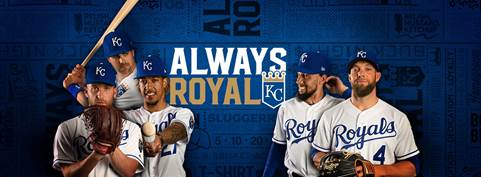
Some April Good: There have been some bright spots in the lineup (Whit, Mondi, Gordo and the surprising Dozier). A few flashes of good pitching. Above average defense when Soler is DH rather than RF. Good speed (but too many pickoffs). On April 19, Terrance Gore batted against Yankees pitcher Adam Ottavino, the first-ever MLB matchup of two players wearing uniform number 0.
First Phrase of the Day: I learned a new baseball term during the April 21 game at Yankee Stadium. In Jorge Soler’s first four trips to the plate, he struck out. I then saw a tweet awarding Soler a “Golden Sombrero.” I went to Wikipedia, and there it was, “the inglorious feat of striking out four times in a single game.” The term is an extension of “hat trick” which is used to describe the occurrence of a positive feat three times in a sporting event, especially hockey. With the number of feats moving from three to four, a bigger hat was needed. Hence, the sombrero. With the Royals scoring so many runs, Soler got another trip to the plate. He struck out for the fifth time to finish his day with a “Platinum Sombrero.”
Yakety Sax Moment: On April 24, the Royals faced Cy Young winner Blake Snell at Tampa Bay. The Royals knocked Snell out in the 4th and went on to win big, 10-2. You would have thought the national highlights that night would have featured the Royals good pitching or robust hitting. But no. The main focus was on the base running. And not in a good way. Two of the best runners in baseball were on with one out – Billy Hamilton on first and Terrance Gore on third. The inning ended without another pitch being thrown. In a series of rundowns after a pick-off throw, both runners were out in a bizarre double play. You have to see it to believe it. Click here for the Yakety Sax moment.
April, 1955: If your Kansas City fandom goes back far enough, you know April can be much worse. In 1955, the A’s played their first season in KC. I was 13 years old, but well remember being at Municipal Stadium for two games that April. One was opening day when I cut school and saw the A’s beat the Tigers. The other was on a Saturday afternoon when the A’s hosted the Chicago White Sox. I went to the game with my dad. Still remember the score. 29-6. Dad never attended another A’s game. The memory of the game lingers for others as shown in this tweet.
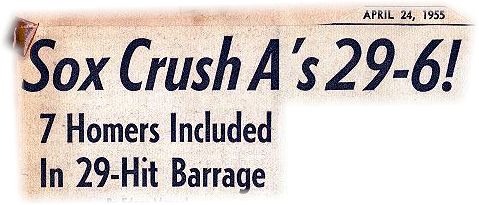
In modern baseball history (since 1900), the most runs scored by a winning team had been 29. That record was set in 1950 when the Red Sox beat the St. Louis Browns 29-4. The A’s loss of 29-6 that my dad and I saw tied that record. These were the only two games in the 20th century with that many runs for the winning team. The number was finally topped in the 21st century. On August 27, 2007, the Texas Rangers beat the Baltimore Orioles 30-3. In a way, the Orioles beat their own record of futility – the Browns (losers at 29-4 in 1950) moved from St. Louis in 1954 to become the Baltimore Orioles.
May, 2019: May has started off exactly like March for the Royals. They won the first two games in a double-header, then lost one, to currently stand at 2-1 for May. But unlike March, the Royals have 25 more games to play in May.
Second Phrase of the Day – Tommy John Surgery and Merriam-Webster: This past week, Merriam-Webster announced the addition of 640 new words and phrases to its dictionary. One was Tommy John surgery, defined as “a surgical procedure in which a torn ulnar collateral ligament of the elbow is replaced with a tendon graft typically obtained from a superficial muscle of the forearm.”

Tommy John had played about 10 seasons in the majors when he injured his elbow in 1974. He decided to become the first baseball player to undergo graft surgery to repair a torn elbow ligament. The operation was not new, but had never been used for someone who planned to return to repetitive stress on the elbow. The surgeon was Dr. Frank Jobe who told John he might not pitch again. But it was a big success. Before the surgery, John won 124 games. After, another 164 for a career total of 288. That’s his scar in the photo. His pioneering role has long been recognized by the use of his name as shorthand to describe the procedure. Merriam-Webster has now joined in.
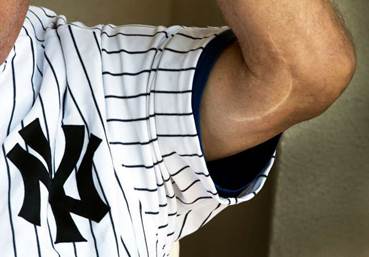
When asked about the new entry to the dictionary, Tommy John said “In one way, it’s very flattering. It’s better to have an orthopedic surgery than a venereal disease named after you. But in another way, how did the surgery get so rampant that it became the commonplace?” John is proud that his operation led to many other players prolonging their careers. But he is concerned that over 50% of the surgeries today are for teenagers – kids being pushed at too young an age to excel. Specialization and year-round travel teams are overusing young arms that should be rested in the winter.
On the wish list for Royals fans – that Salvy comes back next year fully recovered from his Tommy John surgery.
Third Phrase of the Day – Injured List: When Tommy John had his surgery, he no doubt went on the “disabled list.” This year, that terminology has been changed to the “injured list.” So no more “DL” for 10 days, etc. Now the “IL.” Stan Bushman gave me a heads-up about how this came about. He sent a clip about Link 20 promoting the change. Link 20 is an advocacy group for the 20% of the population that is disabled. Link 20’s goal is to connect that 20% to the rest of the population. An injured player may be temporarily hurt, but is not disabled. Other advocacy groups joined the cause and MLB readily agreed to the new terminology.
Two Royals with Two No-Hitters: Steve Busby can claim a first in two categories for no-hitters. He was the first pitcher to throw a no-hitter in each of his first two complete seasons (1973 and 1974). He was also the first pitcher who did not come to bat in his no-hit game – the American League adopted the designated hitter rule in 1973.
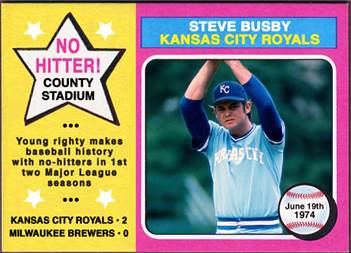
Busby followed with an all-star season in 1975, but started noticing a sore shoulder by the end of the year. In 1976, after struggling early, Busby became the first pitcher to undergo rotator cuff surgery. His surgeon was Frank Jobe, the same doctor who had operated on Tommy John two years earlier. Unfortunately, shoulders do not repair as successfully as elbows. Although Busby would return, he never regained his full skills. In the ensuing years, rotator cuff surgery has sometimes been helpful for pitchers, but not with near the success rate as Tommy John surgery.
Busby missed all of 1977 and most of 1978. To put this in team perspective, the Royals won their division in 1976, 1977 and 1978, but then lost each time to the Yankees in the ALCS. What if their multiple no-hit pitcher had been healthy? Busby had a respectable 1979 season (6-6, 3.63 ERA), but faded in 1980 and was released in August as the team was on its way to its first World Series.
Busby went on to a successful career in broadcasting. When the Royals Hall of Fame was established in 1986, Steve Busby and Amos Otis were the inaugural inductees.
There is a pitcher on the current Royals roster who also has two no-hitters. But not while with the Royals. Homer Bailey pitched twelve years with the Cincinnati Reds before his free agent signing with the Royals this year. In 2012, he no-hit the Pirates, and in 2013, he no-hit the Giants.
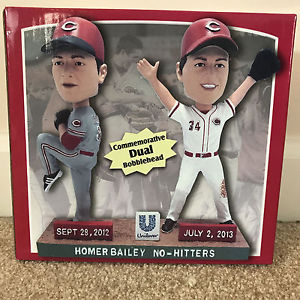
Lonnie’s Jukebox – Jazz and Baseball: One of my favorite photos of Satchel Paige is this one in Harlem in 1941. He was one cool cat.
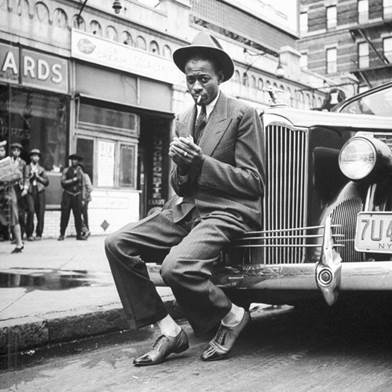
Before signing with the Cleveland Indians in 1948, Satch played most of the 1940’s for the Kansas City Monarchs. He was often “rented out” by the team or freelanced on his own to play for other teams. His celebrity and talent made for a good payday. In 1941, Monarchs owner J. L. Wilkinson arranged for Satch to pitch opening day for the New York Black Yankees (yes, the actual team name). Satch drew a big crowd, Mayor Fiorello La Guardia threw out the first pitch, and the Black Yankees won.
Wilkinson had more than a good payday in mind. He wanted publicity for all the Negro League teams, and putting Satchel on the New York stage was a good way to get nationwide attention. The game was covered by many newspapers, and Satch got accolades like this: “When Leroy (Satchel) Paige stretched his hands above his head here Sunday, cupped the ball in his glove and then reared back like a gigantic crane, you felt sorry for the man at bat.” The premier coverage was a 3-page magazine photo spread in the June 2, 1941, issue of Life. Among the photos were the one above and this one showing Satch playing boogie-woogie for his Black Yankee teammates:

New York and Kansas City were known for their music, and black baseball players were regulars at the clubs in Harlem and in KC’s 18th and Vine area. The players and many musicians stayed in the same (segregated) hotels and formed a bond as they travelled from city to city. In Kansas City, the hotel of choice was the Street Hotel at 18th and Paseo (listed in the Negro Motorist Green Book – as in the movie). Describing those times, Buck O’Neil said, “At 18th and Vine, you couldn’t toss a baseball without hitting a musician, and you couldn’t whistle a tune without having a ballplayer join in. Baseball and jazz, two of the best inventions known to man, walked hand in hand along Vine street.”
This leads me to a black and white photo that has become iconic. It was taken in Harlem in 1958.

Esquire Magazine was planning a jazz issue and asked freelance art director Art Kane to take a photo of musicians playing in the city. Kane ultimately assembled 57 who gathered at 10:00 in the morning at 17 E. 126th Street in Harlem. It was an ambitious time to ask musicians to appear – most would normally have been sleeping in after a long night at the clubs. One quipped that he didn’t realize there were two 10 o’clocks in the same day. I won’t list all 57, but here are three to give you a flavor: Count Basie is seated on the curb with the kids; the first woman to Basie’s right, standing in the first row, is Mary Lou Williams, well-known in Kansas City jazz; and Dizzy Gillespie, farthest right with legs crossed. To identify others in the photo, click here.

I have to mention Dizzy Gillespie because I saw him play his trademark bent trumpet at the Blue Room in the Street Hotel. It was the summer of 1959, a few months after Kane’s Harlem photo was published in Esquire. I had just graduated from high school and was cruising with some pals. Wilbert Harrison had recently hit #1 with “Kansas City,” and we thought we should go see what he was talking about at 12th and Vine. We ended up at 18th and Paseo at the Blue Room. In the relaxed regulatory times, our underage white tee-shirted group got a table in the midst of a crowd dressed to the nines. We had no idea what we were in for, but we knew it was good when Dizzy Gillespie and his famous inflated cheeks hit the stage.
Another musician in the Harlem photo was double bassist Milt Hinton. Over the course of his career, Hinton chronicled the history of jazz by taking thousands of photos. On the day of the shoot in Harlem, he took a home movie as the musicians gathered. Hinton’s film was coupled with new interviews to produce the superb 1994 documentary A Great Day in Harlem. It was nominated for an Oscar. Rita and I saw the film back then at the Tivoli Theater (RIP) and loved it.
The full 60-minute film can be found on YouTube, and this link is to a 10-minute short about the film. As for photographer Art Kane, this was his first professional photo. He went on to become a well-known fashion and entertainment photographer.

The film inspired similar photos to be taken around the country. Many were for musicians in other cities. Not just jazz. Chamber musicians. Doo-Wop. Spanish Harlem. In later years, Hip Hop. Netflix recently used the concept to introduce new shows featuring black actors (1:00, click here). Many more can be found via Google.
The photos are not always of musicians. A few months ago, I was scrolling through the Twitter feed of Bob Kendrick, President of the Negro Leagues Baseball Museum. He had retweeted a message from “Kate” who attached a photo that got my attention – it was of some 200 former Negro Leaguers on a ball field in Kansas City. Kate had organized the taking of the photo in 1995.

I dug a little deeper and found Kate (last name Forristall), now living in New York. In 1995, she lived in Kansas City and was co-chair with Bob Kendrick for the grand opening of the new home for the museum. It was also the 75th anniversary of the founding of the first Negro League. In 1920, eight team owner signed the papers at the YMCA at 18th and Paseo, just across the street from where the Street Hotel would later welcome traveling baseball players and musicians. Many former Negro Leaguers came in for the events, and this led to Kate organizing the photo shoot, truly A Great Baseball Day in Kansas City.
I asked Kate for some reminiscing about her work on the photo. Here’s what she had to say:
“My first contact with the museum was in the spring of 1995 when we bid on and won a tour of the original NLBM with Buck O’Neil. Our family visited the small space and was so inspired by Buck and his vision for the museum that we were thrilled to learn about the 75th Anniversary reunion. Not long before it happened, I saw the documentary, A Great Day in Harlem, and fell in love with the way that it froze a moment in time. Knowing that Negro League players were aging I wanted to do the same thing for them and since my neighbor was John Wakefield, a professional photographer, I went to him with the idea and then pitched it to Don Motley. There was definitely not the lead time you’d want for such a project, but I felt pretty strongly that this was a once in a lifetime opportunity. There was never another gathering of players like that one. The logistics were daunting and honestly even the week before I was afraid it might not happen because the museum had to get 200+ players to Satchel Paige field and then to dinner at the convention center. But the NLBM community rallied and it was great. The weather cooperated. The players were incredibly gracious, given that they were elderly, had to be dressed for dinner and needed to stand for quite a while. The one sadness was that Buck wasn’t in the photo. His wife Ora was ill and he’d gone to be with her before the dinner. I actually forgot about having done this until I saw a tweet about A Great Day in Harlem. I found the photo online and shared, grateful all over again that I’d gotten to be part of such a cool event.”
Many thanks to Kate and John for capturing this moment. In case you Hot Stove readers are counting, the 100th anniversary will be celebrated next year. The Negro Leagues Baseball Museum is already working hard on many events to occur in 2020. A logo is in place:
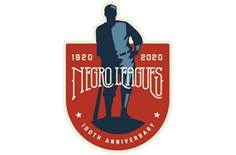
When Robert Altman was filming his 1996 movie Kansas City, he restored some exteriors at 18th and Vine to look like the 1930s. This included constructing signs for Country Club Beer and the Hey Hey Club, a famous jazz and blues venue in those days. The Kansas City Star and Kansas City Jazz International used the movie set to assemble 111 local musicians for a photo shoot by Star photographer Rich Sugg. The result: July 14, 1996, was A Great Day in Kansas City (photo courtesy of LaBudde Special Collections, UMKC University Libraries).
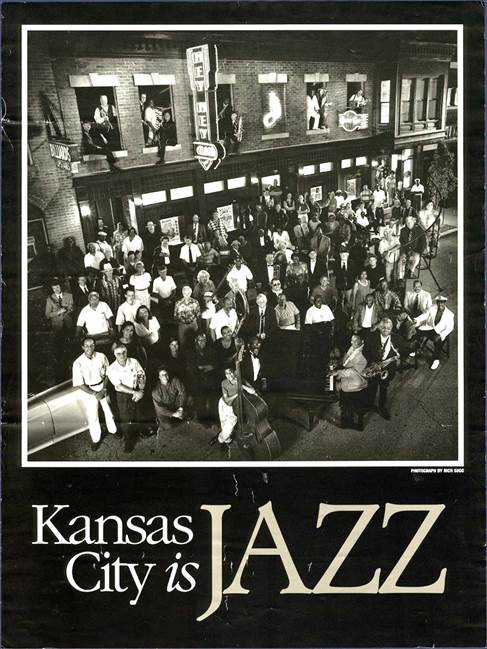
Now let’s listen to some music from the artists in the Harlem photo. Since I was consumed with rock ‘n’ roll in those days, I’m handing off this assignment to three jazz experts. Chuck Haddix helped me run down the Kansas City “Great Day” photo, and the other two are musicians in the photo.
Mike White: My friend since law school, Mike has been playing the sax in KC clubs for some 60 years. When not doing that, he practices law. Mike often lends his talent to charities in Kansas City, including the recording of CD’s with Jay McShann and others to raise funds for Project Warmth. I asked Mike to select pieces by the only two Harlem photo survivors (both saxophone legends). Click here for “Along Came Betty” by Benny Golson (now 90) and here for “Where Are You” by Sonny Rollins (now 88).
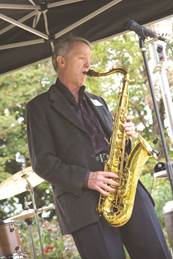
David Basse: David is known for his unique jazz and blues vocals that have pleased fans for over three decades. Rita and I have seen David perform in countless venues around town and, in 1997, at the Clinton Inaugural Gala in DC. He is also the host of a nightly jazz show on Kansas Public Radio (“Jazz with David Basse” – 91.5 FM, Lawrence/Topeka, and syndicated through PRX). David has released several CD’s, and my favorite is shown below. David’s Harlem photo selections are from two artists who were long-time regulars in Kansas City: “Mary’s Idea” by Mary Lou Williams (click here) and “Roll ‘Em, Pete” by Count Basie (click here).
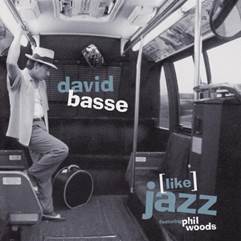
Chuck Haddix: Chuck takes on the name Chuck Haddock when he hosts “Fish Fry” on Friday and Saturday nights on KCUR. His day job is Curator, Marr Sound Archives, UMKC Library. His books include Kansas City Jazz: From Ragtime to Bebop – A History and Bird: The Life and Music of Charlie Parker. Chuck’s Harlem photo choice’s: “Lady Be Good” by Lester Young (click here) and “’Round Midnight” by Thelonious Monk (click here).
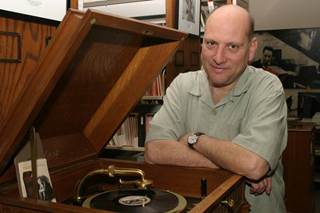
Enjoy.